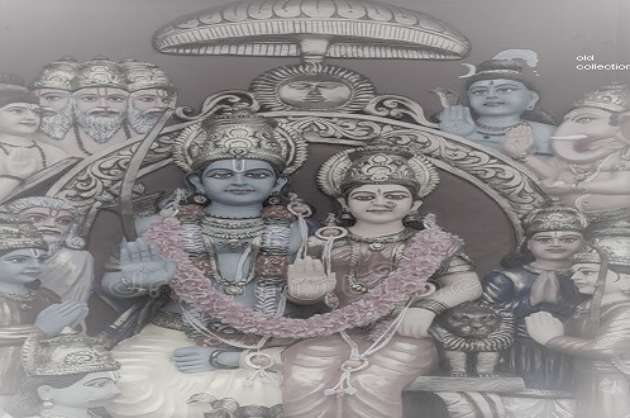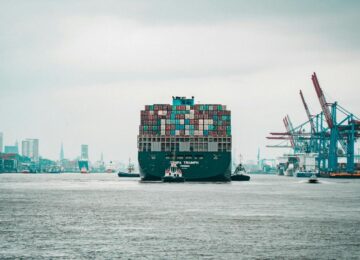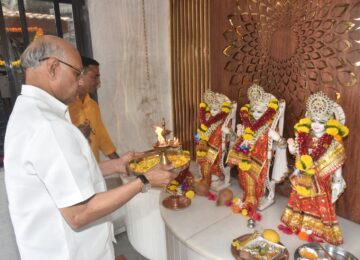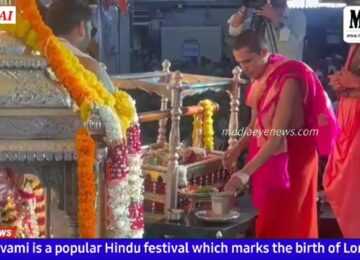Anupama Nair
www.mediaeyenews.com
Today, 17th July 2021 is the start of a holy month in Kerala as it is the start of “Ramayana Masam”, when people read the Malayalam version of Ramayana called “Adyatma Ramayana” written by Thunchaththu Ezhuthachan. Ramayana Masam is celebrated in the Malayalam month of Karkidakam (July—August) and you have to read the entire book in a month. You can rightly say, it is the start of Hindu festivities in Kerala.
Hindu organizations also perform this ritual in almost all temples dedicated to Lord Vishnu. As you know Ramayana is one of the greatest epics that hold great religious significance. During the Ramayana Masam, the recitation of Ramayana starts from the first day of the Karkidakam Masam and continues till the last day. Karkidakam is not considered auspicious for any ceremonies like marriages or house warming or the start of new projects etc., however, the month is ideal for pilgrimage and worship. All the rituals of Ramayana masam and reading of Ramayan should be performed with the utmost care, devotion and rigorous routine.
Families observing the practice must clean their home and surroundings at least a week ahead of the start of the month, and should be vegetarian. This should be a period of complete celibacy and even such thoughts should not be allowed to malign your mind. You should completely give up gossiping, sleeping in the day, violence and ego for these will negate the benefits of the reading.
Beginning from the first day, every day during the month, all the members of the house gather, after sunset and after lighting the evening lamp, they sit close to the ‘Nilavilakku’ or the traditional Kerala lamp and narrate the verses of ‘Adhyatma Ramayana’. The reading of Ramayana should be managed in such a way that it ends on the last day of the Karkidakam Masam.
Besides the practice of reading Ramayana during the Ramayana Masam in the household (which is now a rarity for youngsters), the recitation of this epic is done in Lord Vishnu temples. Several religious and spiritual organizations conduct plays, public discourses, recitals, and quiz competitions based on Ramayana during this month. Hindu devotees actively participate in these events with full of enthusiasm. Also, during the Ramayana Masam, Hindus also undertake a pilgrimage to the four temples of Lord Rama, Lakshmana, Bharata and Shatrughna, located in the districts of Kottayam and Trichur, and this ritual is known as ‘Nalambalam Darshanam’.
The holy book of Ramayana is one of the most widely read epics in India. It is the literary masterpiece of Sage Valmiki which reflects Indian ethos and values and it portrays the divine birth, childhood, and adolescence of Lord Rama. The Adyatma Ramayana consists of seven books, and sixty-five chapters and 4,500 verses in the form of a dialogue between Lord Shiva and Devi Parvati. In the book, the ideal characteristics of Rama and the principles related to devotion, knowledge, dispassion, adoration and good conduct are discussed. The Lord is presented as the supreme Brahman in the text, while the struggles of Sita and him are re-interpreted in an abstract spiritual form.
The Adhyatma Ramayana has seven Kandas, or chapters:
Bala Kand – The chapter begins with the description of ‘Brahmaswarup’, the cosmic and celestial appearance of Lord Rama as an avatar of Lord Vishnu, who was born as a human to eliminate the rakshasas on earth mainly the King of Lanka, Ravana. The chapter describes Rama's childhood and the story of ‘Ahalya Moksham’.
Ayodhya Kand – The chapter describes the life of the Lord in Ayodhya, including his exile, and the death of his father Dasarath.
Aranya Khand– The chapter describes the life of the Lord, Sita and Lakshman in the forest, and also ‘Sita haran’ by Ravana.
Kishkindha Kand – This chapter describes the killing of Vanara King Bali, and the search for Sita.
Sundar Kand – This chapter talks about the journey of Hanuman, his activities and finally ‘Lanka Dahanam’.
Yudha Kanda– It contains details of the battles between the armies of Rama and Ravana, the killing of Ravana, and the coronation of Rama upon his return to Ayodhya from Lanka.
Uttar Kand – This chapter describes the exile of Sita, the birth of Lava and Kusha, Sita going underground with Bhoomi Devi and lastly Rama's departure from the earth to Vaikund, the abode of Lord Vishnu.
A question arose in my mind, why Adhyatma Ramayana when Valmiki Ramayana exists. The answer could be that the purpose behind the work was not to relate ‘Rama Katha’ but to propound the philosophical principles of Bhakti in co-ordination with Advaita Vedanta. This is to be viewed against the picturization of Rama by Valmiki as a perfect human being, or ‘maryada purushottam’, with embodiment of Dharma. However, in Adhyatma Ramayana we see Rama as the form of Brahman – omnipotent, omnipresent and omniscient, the cause without a cause and the one without a second. The factors that caused Him to incarnate Himself in a human form were, as stated in the Gita, to protect Dharma and destroy the evil.
Valmiki Ramayanam depicts Lord Rama in a living form of a human being with all his noble strengths and common weaknesses rarely referring to his divinity as the real Lord Vishnu. However, the entire Adhyatma Ramayana portrays Rama as an incarnation of Lord Vishnu with many prayers and stotrams to Him and at the same time containing the essence of Brahma Vidya or the knowledge about Brahman through various dialogues without losing emphasis on Bhakti or devotion. Wish you all a happy reading. Jai Shree Ram.





























I came to know this after my marriage to Amit. My mother in law reads it every year and I listen. Good article. Jail Shree Ram from Sydney.
Thank you Anu and Amit. Is a mama reading in Sydney
????????????God bless you
Sreerama rama!
Jai shree ram
Jai shree ram
Wish everybody holy month.
Jai shree ram
Wish all this holy month.
My Patti reads Ramayan
My Patti reads Ramayan
My Patti reads Ramayan
Nice info.
Wish all a good and holy month
Jai Sree ram
my amma read ramayana
my amma read ramayana
my amma read ramayana
Wish every one a holy month.
Jai shree ram
Nice info
Jai shree ram
Jai shree ram.
Jai shree ram.
Jai shree ram.
Jai shree ram.
Jai shree ram.
Jai shree ram.
Jai shree Ram.
Jai shree Ram.
Jai Shree Ram
Jai Shree Ram
Jai Shree Ram
Jai Shree Ram
Wish all a holy month
Jai shree ram.
Jai shree ram.
Wish all a happy holy month.
Wish all a happy holy month.
Indeed Ramayana is the soul of India.
Indeed Ramayana is the soul of India.
Wish everyone in Kerala a holy month.
Wish everyone in Kerala a holy month.
Jai Shree Ram
Jai Shree Ram
Jai Shree Ram